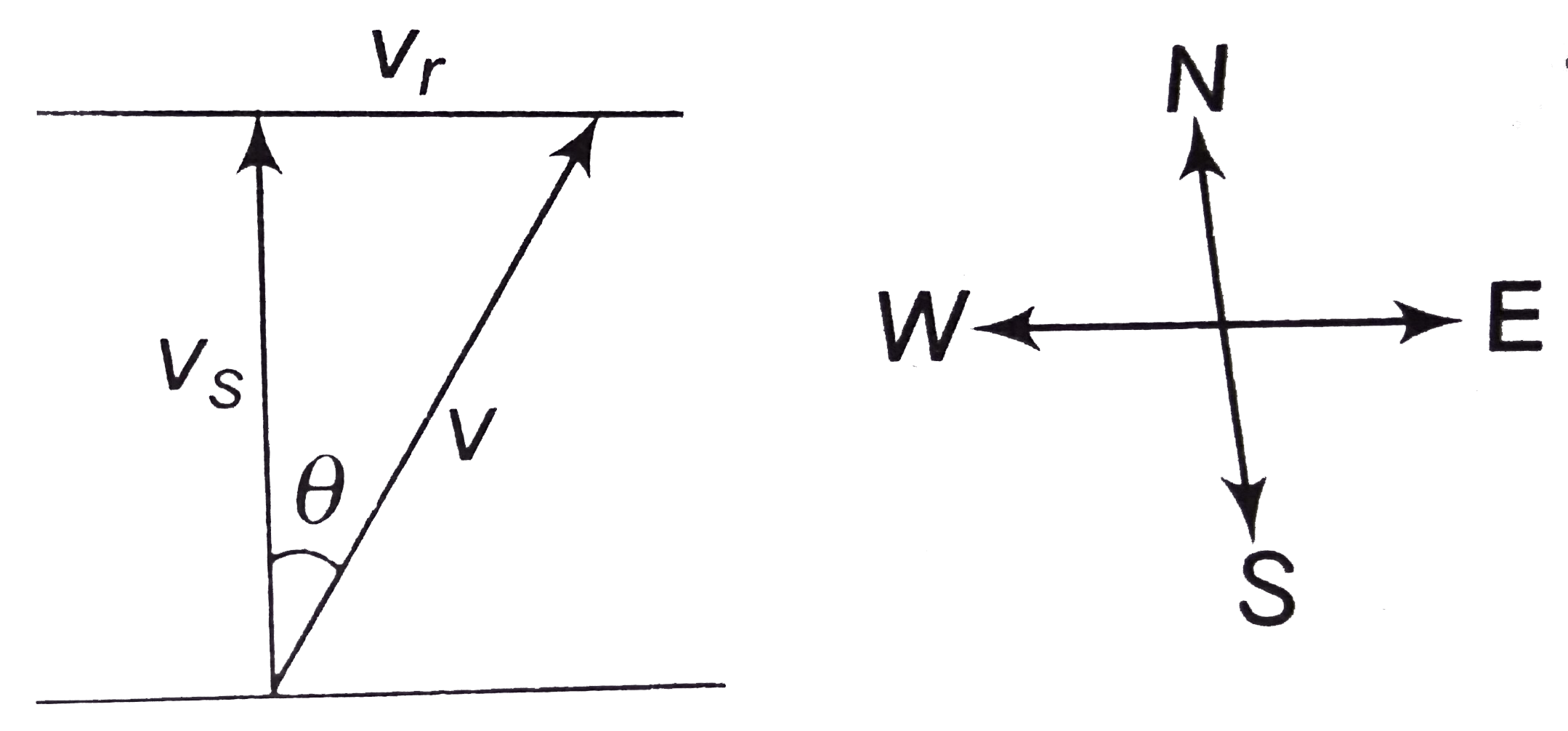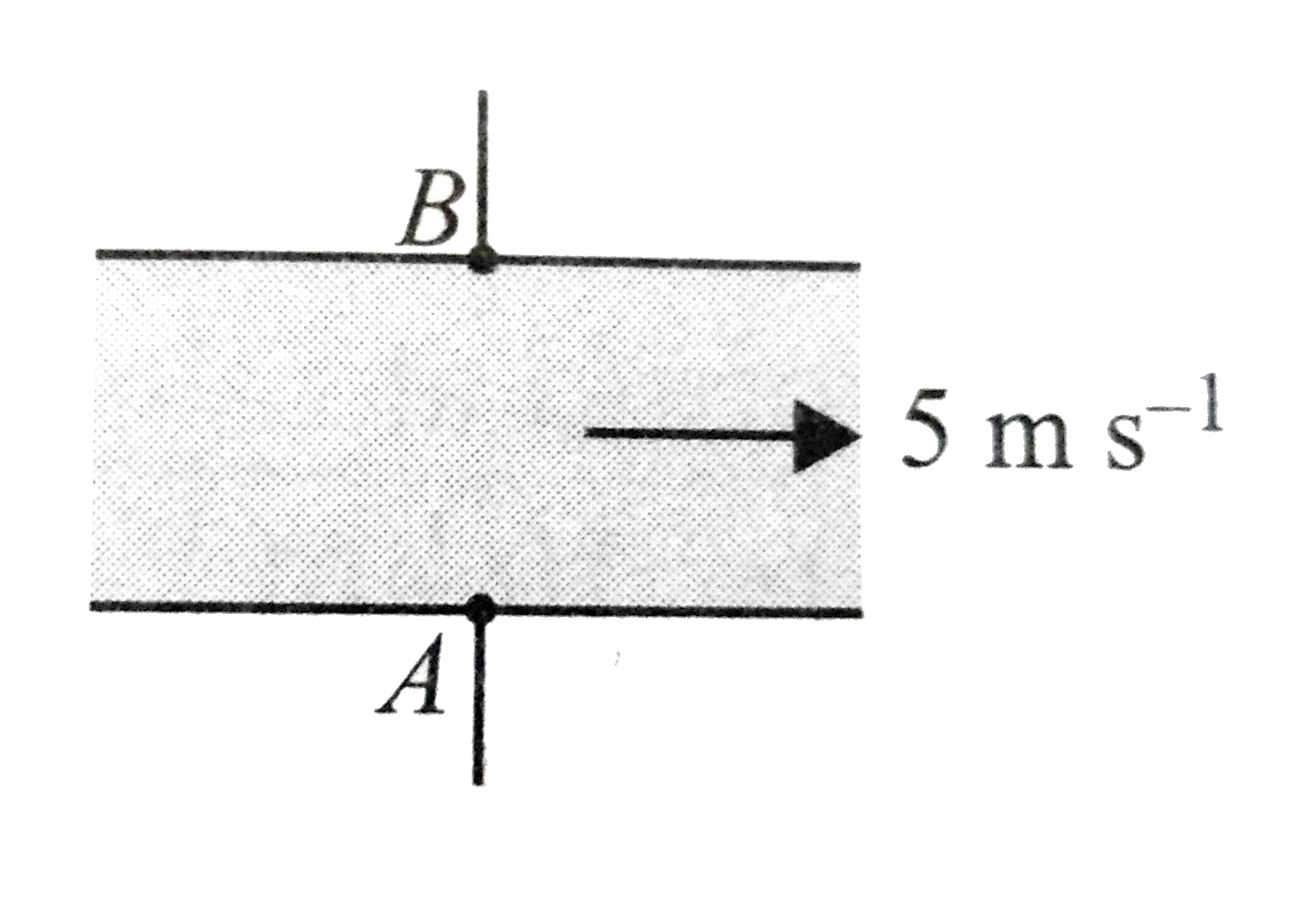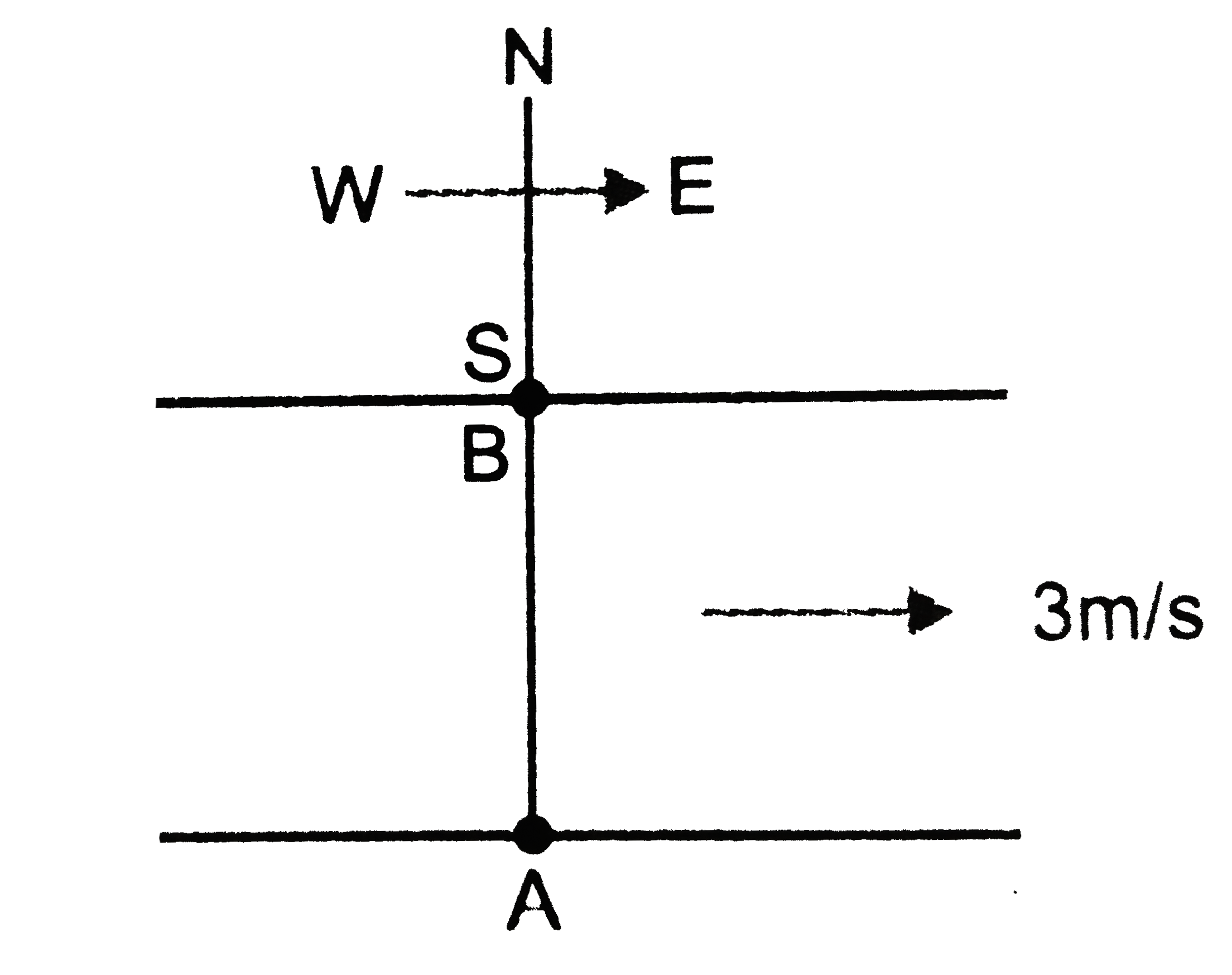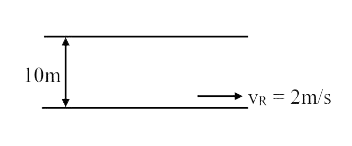A river is flowing due east with a speed 3ms−1. A swimmer can swim in still water at a speed of 4ms−1. If swimmer starts swimming due north, then the resultant velocity of the swimmer is
3ms−1
5ms−1
7ms−1
2ms−1
The correct Answer is:B

Here, Velocity of water flowing in river, nr=3ms−1
Velocity of swimmer in still water, ns=4ms−1
From fig. The resultant velocity of the swimmer is
V=√V2s+V2r=√(4)2+(3)2=√25=5ms−1
Topper's Solved these Questions
- BOOK - A2ZCHAPTER - MOTION IN TWO DIMENSIONEXERCISE - Kinematics Of Circular Motion26videos
MOTION IN TWO DIMENSION
- BOOK - A2ZCHAPTER - MOTION IN TWO DIMENSIONEXERCISE - Problems Based On Mixed Concepts35videos
MOTION IN TWO DIMENSION
- BOOK - A2ZCHAPTER - MOTION IN TWO DIMENSIONEXERCISE - Projection From Inclined Plane20videos
MOTION IN TWO DIMENSION
- BOOK - A2ZCHAPTER - MOCK TESTEXERCISE - Motion With Constant Acceleration15videos
MOCK TEST
- BOOK - A2ZCHAPTER - NEWTONS LAWS OF MOTIONEXERCISE - Chapter Test30videos
NEWTONS LAWS OF MOTION
Similar Questions
A river is flowing from west to east with a speed 5 m s−1. A swimmer can swim in still water at a speed of 10 m s−1 .
If he wants to start from point A on south bank and reach opposite point B on north bank. In what direction direction should he swim ?
 View Solution
View SolutionA river is flowing due east with a speed 3m/s (Fig. 2 (EP) .31 ).
 . (a) If swimmer starts swimming due borth, what will be his resultant velocity (magnitude and direction) ? (b) If he wants to start from point (A) on South bank and reach opposite point (B) on North bank,
. (a) If swimmer starts swimming due borth, what will be his resultant velocity (magnitude and direction) ? (b) If he wants to start from point (A) on South bank and reach opposite point (B) on North bank,
(i) Which direction should he swim? (ii) What will be his resultant speed ? (c ) From two differenrent casses as mentioned in (a) and 9b) above, in which casse will he reach opposite bank in shorter time ?View Solution
Knowledge Check
- Question 1 - Select One
A river is flowing due east with a speed 3m/s. A wimmer can swim in still water at a speed of 4m/s. If swimmer starts swimming due north, what will be his resultant velocity (magnitude and direction) ?
 A5m/s at 37∘ to NB5m/s at 53∘ to NC10m/s at 37∘ to NDNone of these
A5m/s at 37∘ to NB5m/s at 53∘ to NC10m/s at 37∘ to NDNone of these - Question 2 - Select One
A swimmer swims due to
Aforward push of water on the swimmerBbuoyancy of waterCeither (a) and (b)Dneither (a) or (b). - Question 3 - Select One
The stream of a river is flowing with a speed of 2 km/h. A swimmer can swim at a speed of 4 km/h. What should be the direction of the swimmer with respect to the flow of the river to cross the river straight?
A90∘B60∘C120∘D150∘
A swimmer can swim in still water with a speed of 2.5 m/s. What is the shortest time taken by him to swim across the river?
 View Solution
View SolutionA river is flowing due east with a speed more than the maximum speed with which a person can swim in still water. He intends to cross the river by shortest possible path. Which of the following is correct?
View SolutionA river is flowing at a speed of 5 km/h in a particular direction. A man, who can swim at a speed of 20 km/h in still water, starts swimming along the direction of flow of the river from point A and reaches another point B which is at a distance of 30 km from the starting point A. On reaching point B, the man turns back and starts swimming against the direction of flow of the river and stops after reaching point A. The total time taken by the man to complete his journey is
View SolutionA river is flowing at the rate of 6 km/hr. A swimmer swims across with a velocity of 9 km/hr w.r.t. water. The resultant velocity of the man will be in (km/hr):-
View SolutionA man desires to swim across the river in shortest time. The velocity of river water is 3kmh−1 . He can swim in still water at 6kmh−1 . At what angle with the velocity of flow of the river should he swim ?
View Solution

